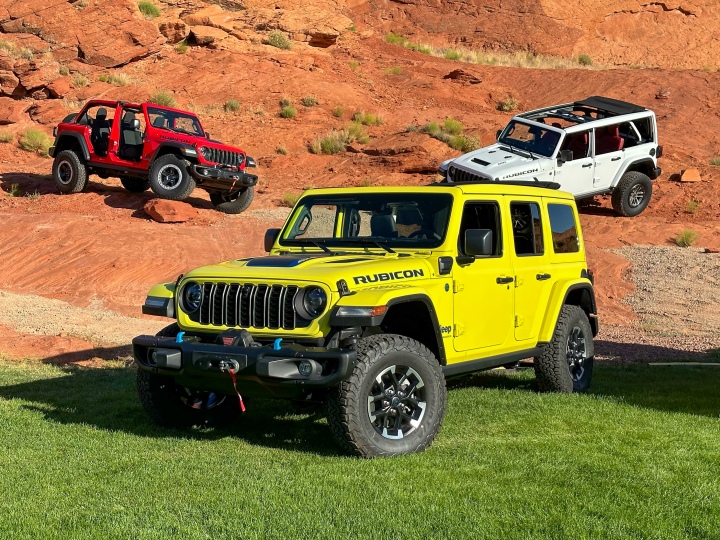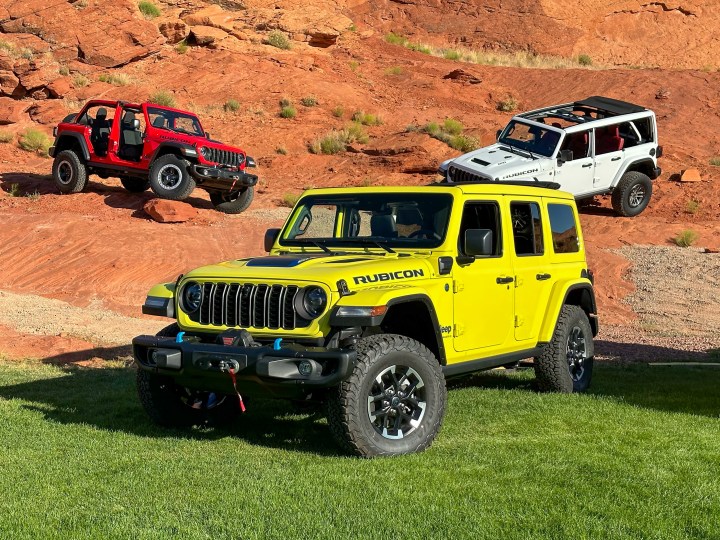
I’m a bit of a broken record at this point, but people continue to be surprised when I tell them that the best-selling plug-in hybrid in the U.S. is the Jeep Wrangler. Not a commuter sedan or practical family SUV; a fun and off-road-ready Jeep. Beyond that, the second-best-selling plug-in hybrid is the Grand Cherokee 4xe. Perhaps Jeep is on to something here.
In this first quarter of this year, 38% of all Wranglers sold were 4xe plug-in hybrids, and I fully expect the second quarter will be even higher. A lot of that is due to aggressive federal and state tax incentives for PHEVs, and when you pair that with an incredibly desirable vehicle, you have a hit on your hands.
The Wrangler 4xe already had a lot going for it — it’s so good I bought the 2022 model. But after I spent a day exploring the 2024’s improvements and new features, I’m itching to upgrade.
Upgrading in-cabin tech in a big way
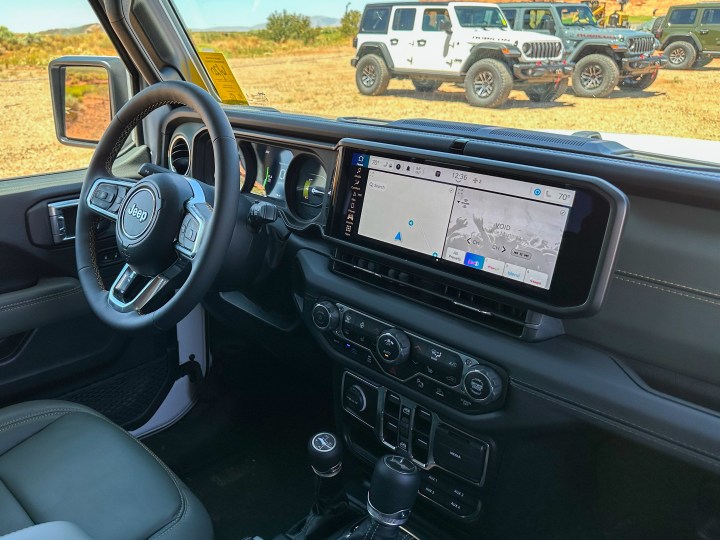
The most dramatic improvement in the 2024 Wrangler, and what it needed most, is a new infotainment screen and dashboard redesign. The 2019-2023 Wrangler’s screen, operating system, and dashboard looked fine, with a charming ruggedness that helped justify their lackluster features. But as soon as you hop into a 2024, earlier models look ancient.
The highlight is a new 12.3-inch touch screen that’s prominently cantilevered off of the dash in a horizontal orientation. The instrument cluster and center screen get wrapped together to form a cockpit, and then flow into the rest of the dash as if it was always this way. Jeep updated some of the dash treatments as well, though the changes are subtle — there are some fresh textures and colors, carrying the accents found elsewhere in the cabin up front. Plus, mounting screws now let you permanently attach a dash cam, GoPro, or another accessory without the usual adhesives and Velcro.
I can’t overstate just how much better and more modern this looks than the previous model’s 8.4-inch display, and that’s before you even get into the software and functionality. This is Uconnect 5, the latest software available across any Stellantis vehicle (Jeep, Dodge, RAM, Chrysler, Alfa Romeo, etc.), and it’s on a display bigger than the Grand Cherokee and just as large as the flagship Grand Wagoneer. That’s a big deal.
The old system was serviceable, but was effectively just a portal to access media, a few vehicle functions, and to get you over to CarPlay or Android Auto as quickly as possible. With Uconnect 5, the Wrangler now feels like it has a properly modern full-car management system.
A new home screen layout lets you put together side-by-side panels so you can follow two pieces of information at once — such as navigation and media — and interact with both simultaneously. You can also pin a grid of favorites for quick access to anything from vehicle functions to third-party apps. In the 4xe, the hybrid pages let you inspect your power usage and charging history, set multiple charging schedules, and change hybrid drive mode settings.
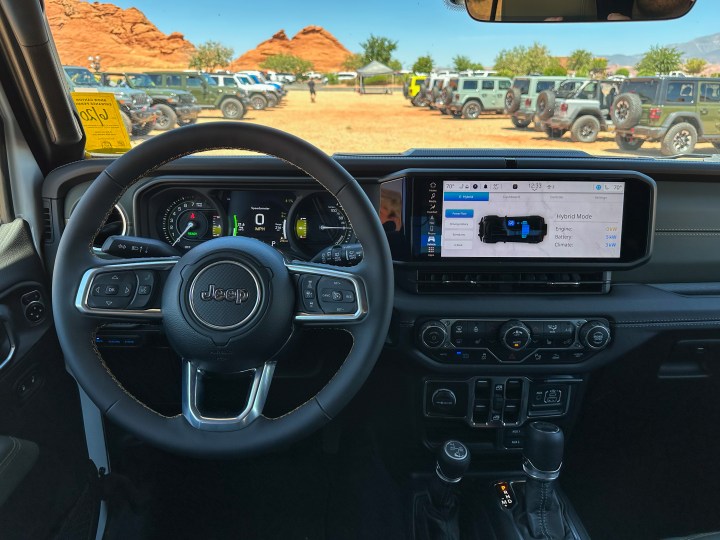
The screen is huge, but doesn’t feel overbearing while you’re driving. Everything’s easy to access, simple enough to understand, and responsive. Full-array local dimming (FALD) helps the bright display battle glare when you’re driving with the top off — as you should be doing whenever possible in a Wrangler! I had no problem seeing the screen even in the blistering Utah summer sun, even with sunglasses on.
This rugged off-road truck now has state-of-the-art in-cabin tech.
Though it’s based on Android and has Amazon Alexa as its voice assistant, you can of course still use CarPlay and Android Auto interchangeably — and they’re now wireless, so you can ditch the cable if you like. When CarPlay is connected it’s just a tap away on the left side, just like the core vehicle functions, and when launched it fills the entire display. If you forgo connecting your phone, the Wrangler does come with built-in TomTom maps with turn-by-turn navigation and traffic, plus Trails Offroad maps with hundreds of off-the-grid routes filled with detailed navigation information, points of interest, trail difficulty ratings, and information on services.
Perhaps the best part about this new larger screen is that it didn’t remove any buttons from the car. You still get physical knobs, buttons, and switches for everything, from climate control and media to parking sensors and core vehicle functions. In a world where carmakers are salivating for all-screen interfaces, Jeep is holding strong with physical controls.
Better regen braking and faster e-save charging
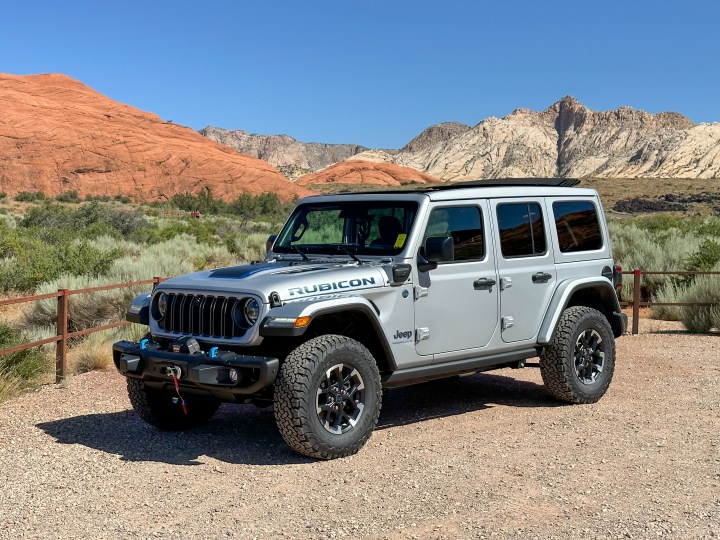
When I hopped into my first test car for the morning, a 2024 Wrangler Rubicon X 4xe with all the option boxes checked, I immediately noticed two critical changes to the driving dynamics (reminder: I have about 8,500 miles of experience in my own 2022 Wrangler 4xe). Though nothing about the powertrain or battery has changed — you still have 375 hp and 470 lb-ft from a hybrid system and a 17.3kWh battery — the calibration of the regenerative braking and the e-save charging system have been dramatically improved.
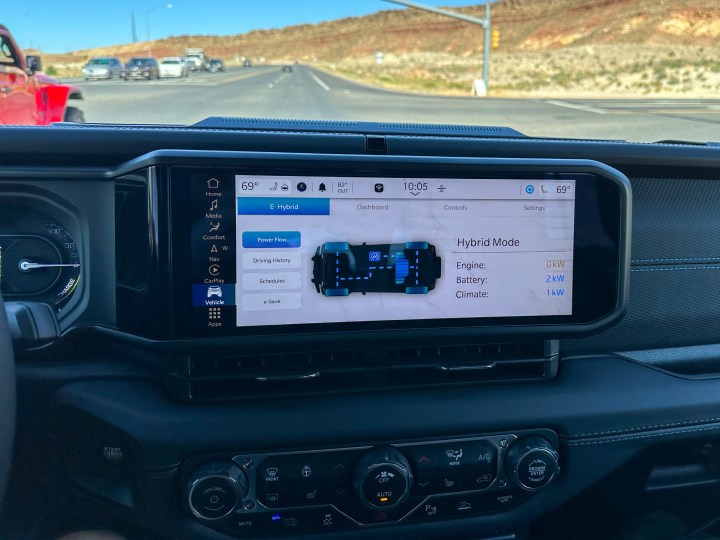
Regen braking, which uses the electric motor to slow the car down instead of the physical brakes, is much more aggressive than before. With the “max regen” setting on, lifting your foot off the gas feels like pressing the brake pedal halfway down. That’s double the regen braking of the old model, by my estimate. You can see the needle in the “charge” gauge jump up to about 50% in most situations, and you slow down aggressively enough in regular driving to not use the brakes unless you’re coming to a complete stop.
This also has the huge benefit of recouping more energy from your (very) heavy car’s momentum to fill a relatively small battery. I wish I could get an update to my 2022 to offer this much regen — once you get a feel for it, this is far preferable as you one-pedal drive most of the time. And if you feel it’s too aggressive, you always have the option to turn it off and smoothly coast a bit more.
Jeep has dramatically improved the functionality of regen braking and e-save mode for 2024.
The “e-save charge” mode, which uses engine power to replenish your battery during normal driving, has also been turned up — it now seems to charge at double the speed. In my older model, it was way too conservative, taking 30 to 60 minutes on the freeway to add any meaningful charge. Now, you can watch the percentage climb at a steady rate as long as you’re cruising at a good speed. Again, if Jeep could find a way to make this change retroactively to older 4xe models, I would leap at the opportunity.
More features, more comfort
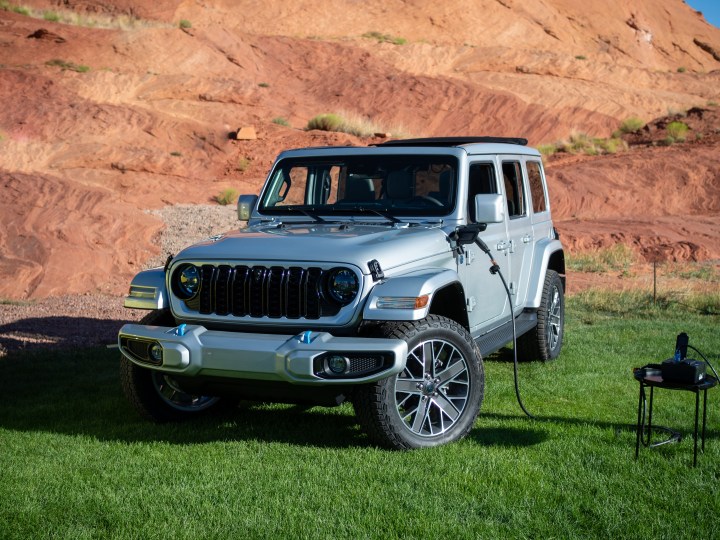
The 2024 Wrangler has fresh interior choices with a wider range of options, bringing cloth seats to more models as standard, but offering nicer leather for an up-charge. I’m particularly fond of the new subtle green leather option. And drumroll please … the first time ever, you can now get power seats in a Wrangler.
They’re standard on the top-end Rubicon X and High Altitude, or you can option them on a Sahara. The power seats offer the same functionality as before, including the ability to ford deep water and rinse out your interior, and they have improved adjustability thanks to front tilting that isn’t available in the manual seats.
Jeep also snuck in a neat addition that took me a while to catch on to: a new accessory called the “Jeep Power Box” that lets you draw from your Wrangler 4xe’s battery to power anything that uses a household 120V plug. The Power Box plugs into the 4xe’s charge port and provides four grounded 120V outlets and a USB-C port to keep your campsite, tailgate party, worksite, or beach hangout going all day. While the 17kWh battery isn’t very big for driving the car, it is a huge amount of power when you’re simply charging laptops, running lamps, powering a stove, or any other light-duty task. In comparison, most big portable power stations offer only 1-2kWh and are still suitable for weekend-length camping trips, for example.
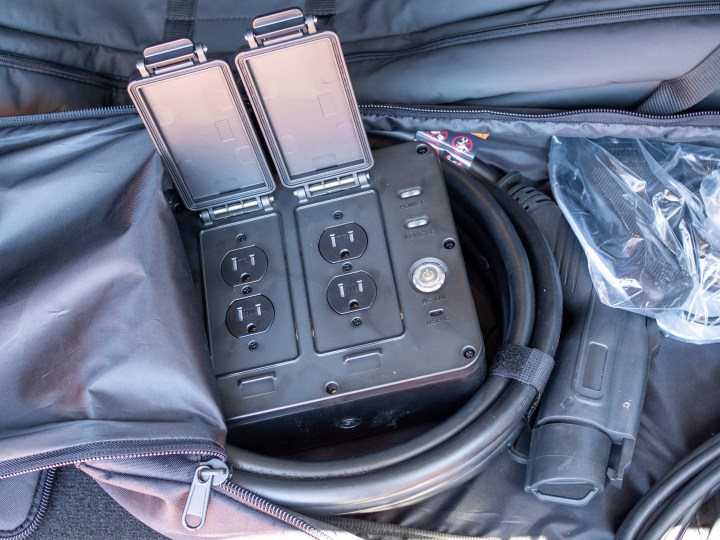
Adding to the long list of disappointments for me as a 2022 owner, the Jeep Power Box is not backward-compatible with earlier 4xe models. But if you’re out there buying a 2024, I was pleasantly surprised to see the Power Box will be included for the Sahara and above (and available for purchase on Sport and Willys). Get ready to go off the grid, and bring all of your power-thirsty tech with you.
In what could be the least-interesting addition to anyone but Wrangler buyers, Jeep has also finally killed the old-school 35-inch metal “whip” radio antenna that mounted to the fender. It’s now integrated into the top of the windshield, which may increase the cost of future windshield replacements but is yet another example of how the Wrangler is being steadily pulled into the modern era.
Enhanced safety, now standard
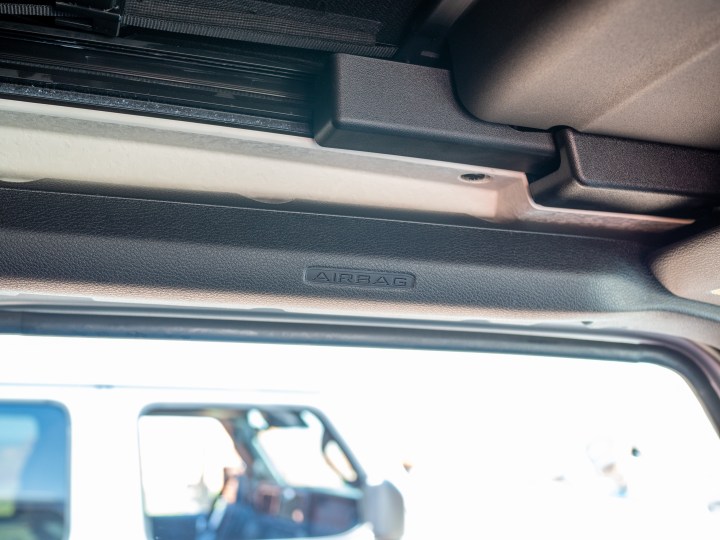
Wranglers have historically come with the trade-off of lacking modern safety features, but just like with its in-cabin tech, it’s making big steps forward in 2024. All Wranglers now have much-needed side-curtain airbags for both first- and second-row occupants, which are seamlessly integrated into the roll hoop structure. The rear seats also now have seatbelt pre-tensioners and load-limiters for the outside passengers.
These are all features that I obviously can’t (and don’t want to) test, but these are safety items we take for granted as being standard on every other SUV and it’s great to see on the Wrangler.
You may be surprised to know just how many safety features are available on a modern Wrangler.
If you haven’t looked at or driven a Wrangler in a while, you may be surprised to know how many available safety features it has nowadays. You’ll find parking sensors, rear cross-traffic alerts, blind spot alerts, automatic emergency braking, a front-facing camera, and adaptive cruise control (in various trim levels), putting the Wrangler in line with the price competition in many respects.
A great PHEV, now an even better value
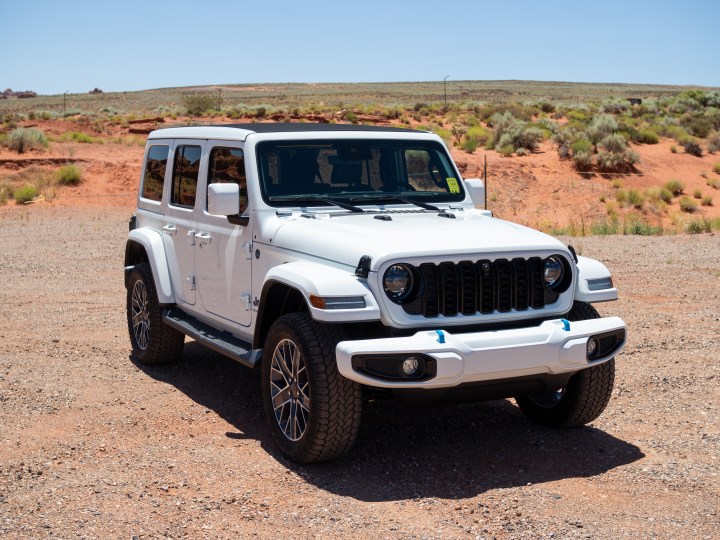
People are rightly surprised when they see the sticker prices on new Wranglers. Even with the new entry-level Sport trim, the starting price for a plug-in hybrid Wrangler 4xe is about $50,000 — a hair over the price of an average new car in the U.S. Most 4xes will break $60,000, and if you get a Rubicon X with a few options, you could quickly top $70,000.
The 4xe is clearly the best powertrain choice for the 2024 Wrangler.
But as I mentioned at the start, the Wrangler 4xe still offers surprising value. Federal and state tax incentives can save you $7,500 or more from the start — which is applied even more favorably if you lease — and the Wrangler continues to have much higher than average resale value when you’re ready to move on. Those factors don’t make the Wrangler an inexpensive car to buy and own, but they absolutely let more people reach the point where they’re financially comfortable buying this incredibly fun and desirable car.
So long as the tax incentives are still in play, now with the improvements to the hybrid-specific driving dynamics and the addition of the Jeep Power Box, you’re going to have a hard time convincing me to buy anything but the 4xe model when shopping for a Wrangler.
Editors’ Recommendations
Services Marketplace – Listings, Bookings & Reviews
